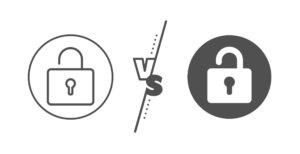What is Proximity Authentication?
Proximity authentication explained. Proximity authentication is the process of authenticating users of a system via their presence (proximity) using either a proximity token or smartphone. If the user is in…
Read MorePreventing Password Fatigue & Stress
Stress alert! The biggest password problem might be the fatigue and stress. Password stress happens when users must memorize and type a large number of passwords on a consistent basis. Nobody…
Read MoreBluetooth Proximity Lock for Workstations
Bluetooth proximity lock for computers allows you to lock and unlock computers with a Bluetooth signal (Bluetooth token or phone). Some Bluetooth PC lock models use active Bluetooth connections. Some…
Read MoreSecurity Key – Multi Factor Authentication
Security Key for Multi-Factor Authentication explained. Hardware-based MFA keys provide an additional layer of security to your computers, website accounts, and desktop application accounts. Security key-based login is an authentication…
Read MoreAuthentication Methods
What is an Authentication Method? Authentication is a security mechanism that requires predetermined evidence (factor) before being granted authorization to a system. 2FA is consists of two different required authentication…
Read MorePreventing Man-in-the-Middle Attacks with GateKeeper.
Prevent man-in-the-middle attacks using GateKeeper 2FA. Using a 2-factor authentication solution prevents malicious actors from successfully executing a man-in-the-middle attack, even if a password is stolen. The thief would still…
Read MoreWhat is Authentication Intent?
Authentication intent is a specific action required by the user intending to login. IT admins also use intent to reduce unintended login risks. Examples of requiring authentication intent include typing…
Read MorePowerful Password Manager Advantages and Disadvantages to Watch Out For
A password manager is a digital tool that securely stores and manages login (username, password, and more) credentials and other details. Password manager advantages are expansive! First, let’s cover some…
Read MoreWhat’s the difference between lock, switch user, and sign out?
GateKeeper Authentication lock options. Windows 10 has three options when the user leaves the computer with their GateKeeper token: lock, switch user, and sign out. GateKeeper proximity lock allows either…
Read More








